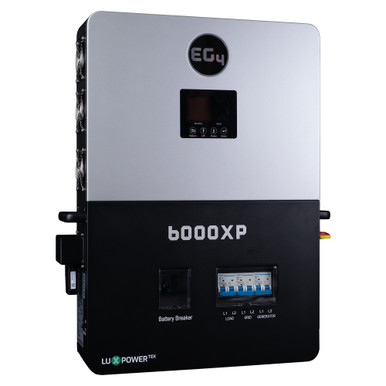Good morning all.
My wife and I have decided to pull the trigger on solar. We had a local company come out and give us a sales pitch which was...a sales pitch. So I'm going to start building our system myself and I'd like some guidance on buying quality equipment. I've been doing research for about a month in the library and on here and almost have my head wrapped around everything.
our budget is 20k for this year, we plan to expand next year.
we don't care about tying to the grid and have no inspection or permit requirements.
our current consumption ranges from 21-50 kwh per day.
all of our appliances are electric. eventually we would like to build up to complete self-sufficiency. that would mean planning on a potential 150 amp draw capability. obviously we can't afford the numerous inverters we would need for that so i'm going to begin separating our circuits out with this first stage build.
We will be mounting to our metal roof and have 20,000 square feet of south facing, ~30 degree pitch roof.
Our latitude is 38 degrees 50 min.
For batteries I like what I've read about the 18650 guy in Georgia. I can build our bank myself to save money there.
Panel brand doesn't seem to matter that much but please correct me if I'm wrong.
Inverters and electronics are where I'm stuck trying to balance my budget. Victron and Schneider seem to be the consensus bullet-proof go-to manufacturers here. I need to be able to run our well pump which draws 11 amps at 240v and the circulation fan for our wood furnace which is 5 amps at 120v. It looks like Schneider can handle 240v in one unit but Victron would require a more complicated system build. Sol-ark seems to have good reviews for their all-in-one but it looks like they've only been around 10 years or so and I could care less about managing the system through an app.
So....is there anything I'm missing here? I believe that cheaper products are generally cheaper for a reason. Should I start my budget with the best 4-6 kw inverter (and associated parts) I can afford and go from there? We're going to be buying new, warrantied and tax eligible panels and battery components.
Thanks in advance!
My wife and I have decided to pull the trigger on solar. We had a local company come out and give us a sales pitch which was...a sales pitch. So I'm going to start building our system myself and I'd like some guidance on buying quality equipment. I've been doing research for about a month in the library and on here and almost have my head wrapped around everything.
our budget is 20k for this year, we plan to expand next year.
we don't care about tying to the grid and have no inspection or permit requirements.
our current consumption ranges from 21-50 kwh per day.
all of our appliances are electric. eventually we would like to build up to complete self-sufficiency. that would mean planning on a potential 150 amp draw capability. obviously we can't afford the numerous inverters we would need for that so i'm going to begin separating our circuits out with this first stage build.
We will be mounting to our metal roof and have 20,000 square feet of south facing, ~30 degree pitch roof.
Our latitude is 38 degrees 50 min.
For batteries I like what I've read about the 18650 guy in Georgia. I can build our bank myself to save money there.
Panel brand doesn't seem to matter that much but please correct me if I'm wrong.
Inverters and electronics are where I'm stuck trying to balance my budget. Victron and Schneider seem to be the consensus bullet-proof go-to manufacturers here. I need to be able to run our well pump which draws 11 amps at 240v and the circulation fan for our wood furnace which is 5 amps at 120v. It looks like Schneider can handle 240v in one unit but Victron would require a more complicated system build. Sol-ark seems to have good reviews for their all-in-one but it looks like they've only been around 10 years or so and I could care less about managing the system through an app.
So....is there anything I'm missing here? I believe that cheaper products are generally cheaper for a reason. Should I start my budget with the best 4-6 kw inverter (and associated parts) I can afford and go from there? We're going to be buying new, warrantied and tax eligible panels and battery components.
Thanks in advance!





